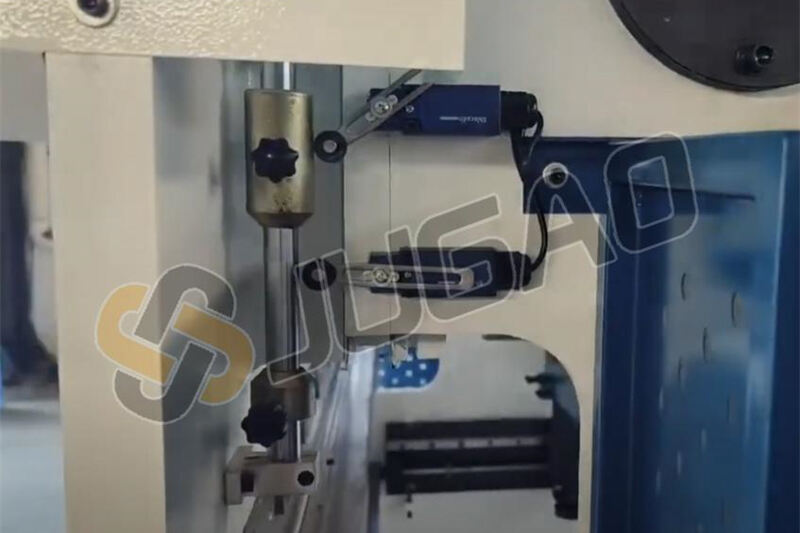Analysis of Ram Travel Control System in Hydraulic Press Brakes
Table of Contents
1. Core Technical Principles
2. System Workflow
3. Mechanical Stop Block Setup Guide
4. Technical Advantages Analysis
In the field of metal sheet processing, ram travel control in hydraulic pressbrakes is a critical factor in ensuring machining accuracy. This technologydirectly affects bend angle consistency and processing efficiency by preciselyregulating the ram's movement trajectory.

I. Core Technical Principles
Modern hydraulic press brakes adopt an "electro-hydraulic-mechanicalintegrated" control solution, which includes:
Hydraulic system for stable power output
Electronic sensors for real-time position monitoring
Mechanical stop blocks as physical limit safeguards
CNC system for intelligent closed-loop control
II. System Workflow
1. Initialization Phase
The CNC system automatically calculates optimal parameters based on presetprograms, including:
○ Ram speed (adjustable from 20-200mm/s)
○ Positioning accuracy (±0.01mm)
○ Pressure curve (adaptive to material properties)
2. Operation Phase
High-precision linear encoders sample at 500Hz, providing real-time feedbackon ram position. If deviations are detected, the system compensates within 0.05seconds.
3. Termination Phase
A three-stage braking system ensures precise stopping:
1. Electronic pre-deceleration
2. Hydraulic cushioning
3. Final positioning via mechanical stop blocks
III. Mechanical Stop Block Setup Guidelines
1. Measurement Preparation
○ Calibrate reference surfaces using laser rangefinders
○ Input material parameters (type/thickness/hardness)
2. Stop Block Adjustment
○ Upper stop block: Sets safe starting position
○ Lower stop block: Determines bending depth
(Equipped with quick-locking mechanisms, adjustment time<30 seconds)

IV. Technical Advantages Comparison
| ControlMethod | Repeatability | AdjustmentEfficiency | MaintenanceCost |
| PureMechanical | ±0.1mm | 5-10minutes | Low |
| CNCHydraulic | ±0.02mm | Instantadjustment | Medium |
| HybridControl | ±0.05mm | <2minutes | RelativelyLow |
Innovative Application Case
An automotive parts manufacturer achieved the following after adopting thissystem:
○ Product qualification rate increased to 99.8%
○ Die change time reduced by 65%
○ Energy consumption lowered by 22%


















































